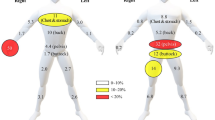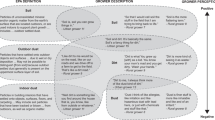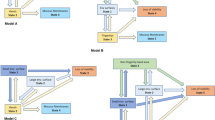Abstract
To reduce the uncertainty associated with current estimates of children's exposure to pesticides by dermal contact and indirect ingestion, residue transfer data are required. Prior to conducting exhaustive studies, a screening study to identify the important parameters for characterizing these transfers was designed. A fluorescence imaging system was developed (Ivancic et al., in press) to facilitate collection of surface residue transfer data for repeated contacts. Next, parameters that affect residue transfer from surface-to-skin, skin-to-other objects, and skin-to-mouth were evaluated using the imaging system and the fluorescent tracer riboflavin as a surrogate for pesticide residues. Riboflavin was applied as a residue to surfaces of interest. Controlled transfer experiments were conducted by varying contact parameters with each trial. The mass of a tracer transferred was measured and the contact surface area estimated using video imaging techniques. Parameters evaluated included: surface type, surface loading, contact motion, pressure, duration, and skin condition. Transfers both onto, and off of, the hand were measured. To efficiently identify parameter changes resulting in significant effects, the Youden ruggedness test was used to select the combination of parameters varied in each contact trial. In this way, more than one parameter could be varied at a time and the number of trials required was minimized. Results of this study showed that surface loading and skin condition (significant at alpha=0.05) are among the important parameters for characterizing residue transfers of riboflavin. Duration of contact within the time range investigated does not have a significant effect on transfer of this tracer. Results of this study demonstrate the potential for collecting dermal transfer data using the Ivancic et al. fluorescence imaging system and provide preliminary data to reduce uncertainty associated with estimating dermal exposures resulting from contact with residue-contaminated surfaces. These data will also aid in determining what additional residue transfer data should be collected and what type of microactivity data are needed to estimate dermal and indirect ingestion exposure to residues on household surfaces.
This is a preview of subscription content, access via your institution
Access options
Subscribe to this journal
Receive 6 print issues and online access
$259.00 per year
only $43.17 per issue
Buy this article
- Purchase on Springer Link
- Instant access to full article PDF
Prices may be subject to local taxes which are calculated during checkout


Similar content being viewed by others
References
ASTM Standard D 6333-98. “Standard Practice for Collection of Dislodgeable Residues from Floors,”. Annual Book of ASTM Standards, Vol. 11.03, American Society for Testing and Materials, West Conshohoken, PA, 2001.
Brouwer D.H., and Kroese R., et al. Transfer of contaminants from surface to hands: experimental assessment of linearity of the exposure process, adherence to the skin, and area exposed during fixed pressure and repeated contact with surfaces contaminated with a powder. Appl Occup Environ Hyg 1999: 14 (4): 231–239.
Camann D., Harding H.J., Geno P.W., and Agrawal S.R., Comparison of Methods to Determine Dislodgeable Residue Transfer from Floors, RTP, NC, National Exposure Research Laboratory, U.S. EPA., EPA/600/R-96/089, 1996a.
Camann D.E., and Majumdar T.K., et al. Transfer efficiency of pesticides from carpet to saliva-moistened hands. Measurement of Toxic and Related Air Pollutants, Vol. VIP-64. Air and Waste Management Assoc., Pittsburgh, PA, 1996b, pp. 532–540.
Cochran W.G., and Cox G.M. Experimental Designs, 2nd edn. John Wiley and Sons, New York, 1957, pp. 255–275.
Cohen Hubal E.A., Sheldon L.S., Burke J.M., McCurdy T.R., Berry M.R., Rigas M.L., and Zartarian V.G. Exposure assessment for children: a review of the factors influencing exposure of children, and the data available to characterize and assess that exposure. Environ Health Perspect 2000a: 108 (6): 475–486.
Cohen Hubal E.A., Sheldon L.S., Zufall M.J., Burke J.M., and Thomas K.W. The challenge of assessing children's exposure to pesticides. J Expo Anal Environ Epidemiol 2000b: 10: 638–649.
Edwards R.D., and Lioy P.J. The EL sampler: a press sampler for the quantitative estimation of dermal exposure to pesticides in housedust. J Expo Anal Environ Epidemiol 1999: 9 (5): 521–529.
Geno P.W., Camann D.E., Harding H.J., Villalobos K., and Lewis R.G. Handwipe sampling and analysis procedure for the measurement of dermal contact with pesticides. Arch Environ Contam Toxicol 1996: 30 (1): 132–138.
Hsu J.P., and Camann D.E., et al. New Dermal Exposure Sampling Technique, EPA/AWMA International Symposium “Measurement of Toxic and Related Air Pollutants”, Raleigh, NC, 1990.
Ivancic W.A., Nishioka M.G., Barnes Jr. R.H., and Cohen Hubal E.A. Development and evaluation of a quantitative video fluorescence imaging system and fluorescent tracer for measuring transfer of pesticide residues from surfaces to hands with repeated contacts. Annals Occup Hyg, in press.
Rodes C.E., and Newsome J.R., et al. Experimental methodologies and preliminary transfer factor data for estimation of dermal exposure to particles. J Expos Anal Environ Epidemiol 2001: 11: 1–17.
U.S. EPA. Protocol for Dermal Assessment: A Technical Report. Office of Research and Development, U.S. EPA, Las Vegas, Nevada, EPA/600/X-93/005, 1993.
Acknowledgements
We acknowledge the laboratory assistance of Battelle staff, including Kimberlea Andrews, Julie Sowry, and Martha McCauley.
Author information
Authors and Affiliations
Corresponding author
Additional information
Disclaimer
The United States Environmental Protection Agency through its Office of Research and Development funded and managed the research described here under Contract No. 68-D-99-011 to Battelle. It has been subjected to Agency review and approved for publication.
Rights and permissions
About this article
Cite this article
Cohen Hubal, E., Suggs, J., Nishioka, M. et al. Characterizing residue transfer efficiencies using a fluorescent imaging technique. J Expo Sci Environ Epidemiol 15, 261–270 (2005). https://doi.org/10.1038/sj.jea.7500400
Received:
Accepted:
Published:
Issue Date:
DOI: https://doi.org/10.1038/sj.jea.7500400
Keywords
This article is cited by
-
A Community-Based Health Risk Assessment Following the Gold King Mine Spill: Results from the Gold King Mine Spill Diné Exposure Project
Exposure and Health (2023)
-
Exploring spatial averaging of contamination in fomite microbial transfer models and implications for dose
Journal of Exposure Science & Environmental Epidemiology (2022)
-
Age-related changes to environmental exposure: variation in the frequency that young children place hands and objects in their mouths
Journal of Exposure Science & Environmental Epidemiology (2020)
-
Experimental estimation of migration and transfer of organic substances from consumer articles to cotton wipes: Evaluation of underlying mechanisms
Journal of Exposure Science & Environmental Epidemiology (2016)
-
Influences on transfer of selected synthetic pyrethroids from treated Formica to foods
Journal of Exposure Science & Environmental Epidemiology (2011)



